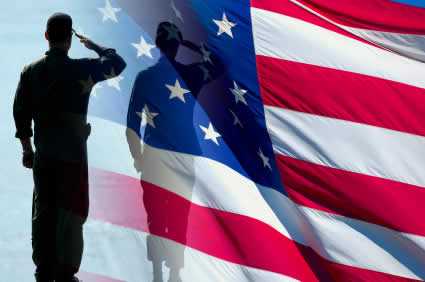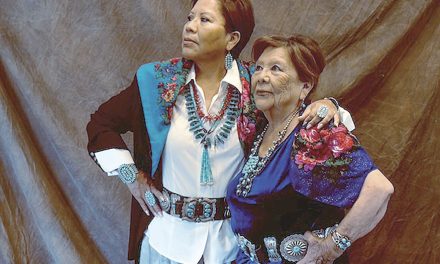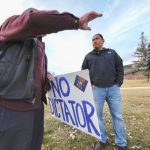
50 Years Ago: Navajos honor the first victim of the Vietnam War in 1965

The Navajo Times reported this week 50 years ago the death of Marine Lance Corporal Alvin Chester, who would be recognized as the first Navajo to be killed in action in Vietnam on July 6.
Little did the Times writers know, but reports of Navajos dying in Vietnam would be reported on the front page of the magazine for the next seven years.
The paper reported in its July 16 issue that Chester died at the Qui Nhon Republic of Vietnam while engaged with the enemy.
Chester was laid to rest with honors on July 16 and In attendance were 150 people, mostly friends, relatives and tribal officials at the St. Michaels Chapel.
He was buried in the military section at the Fort Defiance Cemetery.
Chester had attended the Window Rock Public School District, but completed his high school education at the Riverside Indian School in Anadarko, Okla. Before joining the marines, he also attended the Chilocco Indian School in Oklahoma.
His mother, Nellie Etsitty, told the Times that the last time she heard from her son was through a letter he sent to her on June 11, stating he was on stand-by in Okinawa.
In other news, this was the week that Navajos first saw a film made by the Catholic Church on the reservation.
The half-hour film, “Kee Begay, Navajo Boy,” was made in 1964 by the Franciscan Film Studio in Los Angeles and was to be shown on television later that fall. As the film was shot on location in Lukachukai, the studio planned a screening in the Lukachukai area for later that same month.
The film stars Nelson Begay of Wheatfields, Ariz., along with members of his family, including his mother and father. Also in the film is Keeto Deschiny, who played the Grandfather and Paul Begay who played a Navajo medicine man.
It was written by several priests serving on the Navajo Reservation, including Father Karl Holtsnider. It was filmed in Lukachukai.
“The film tells the story of a little boy who is confused as he sees the improvements being made on the reservation and as he tries to adapt to the changing ways,” said the article in the Times.
The Times reported that the two showings in Lukachukai drew standing-room-only crowds at the Mission Movie Hogan, which was expected since several dozen of the people in the community were used as extras in the film, all of whom brought family members.
Also in this issue of the paper, the new editor – Leslie Goodluck – used the editorial page to urge members of the tribe to share the news in their community with other members of the tribe.
Former editor of the Times Marshall Tome had resigned on July 10th, saying he was moving to California, where he had been working before taking on the Navajo Times job in 1961. He left the paper to Goodluck, after deciding he had enough of trying to appease all the factions on the reservation.
“The Navajos living off the reservation want to know what is going on here at home,” Goodluck wrote. “The Navajo Times wants to bring you this news while it is still news.”
“We are sure that the 106,000 Navajos É are more interested in news from their own tribal council members than they are in what someone who lives off the reservation might happen to think,” Goodluck added.
This plea to members of the tribal Council, to basically become unpaid writers for the Times, wasn’t surprising. Shortly after becoming the editor, Goodluck learned the truth about the Navajo Times – there were no reporters and no money to hire any.
So Goodluck decided give the Council a chance to present the news as they wanted, since almost every member of the Council distrusted the news in the paper for one reason or another.
It was a novel approach and it may have worked except for one thing – very few of the members of the council knew how to write a story (at least one that made sense), and most would rather criticize the paper rather than becoming part of it.
This would be the first issue of the paper in more than two years where Tome had not written his popular Smoke Puffs column on the editorial page. No more printing information from off the reservation that he deemed relevant for tribal members to know, and no more telling corny jokes credited to his friends.
Goodluck realized that it would be hard to replace Tome’s unique sense of humor.
“There is a big empty space up at the top of the Tribal Smoke Puffs column where the picture of Marshall Tome, former editor of the Navajo Times, used to appear,” the paper said. “This empty space left by the resignation of Marshall Tome is going to be mighty hard to fill in more ways than one.”
“Meanwhile we will do our best to pitch-hit. Perhaps sometime in the near future, Marshall will be able to send his reservation readers back a few; Smoke Puffs’ from California,” it read.
The first column without Tome wasn’t too bad.
“Overheard in the Shalimar during the Fourth of July celebration – One of our college-educated Navajo bronc riders came to town with a big thirst for some good reading. (Bet that wasn’t the kind of thirst you thought we were going to say.
“Anyway, to get on with our story, he went up to the newsstand and asked for a Time magazine and the clerk told him they were all sold out. When he heard this, our educated bronc rider turned around, faced the people in the lobby, threw up his hand in the traditional manner of rodeo contestants and called out loud and clear – No ‘Time’ for this cowboy.”
To read the full article, pick up your copy of the Navajo Times at your nearest newsstand Thursday mornings!
Are you a digital subscriber? Read the most recent three weeks of stories by logging in to your online account.








 Highway 264,
Highway 264, I-40, WB @ Winslow
I-40, WB @ Winslow